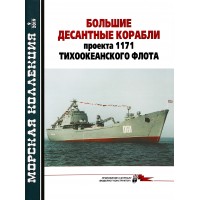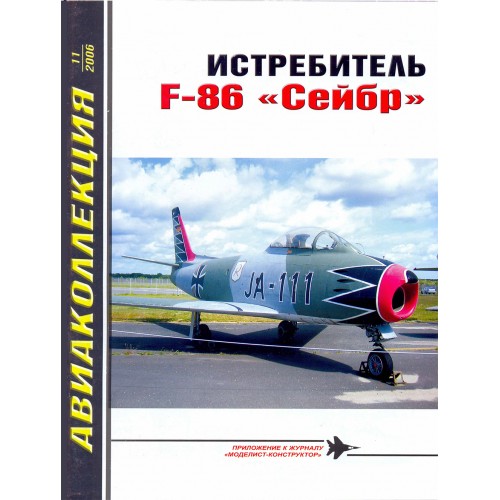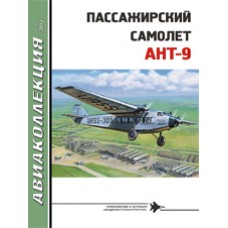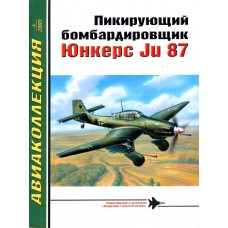AKL-200611 AviaCollection / AviaKollektsia 11/2006: North American F-86 Sabre US Jet Fighter Aircraft of 1950s. Photos, schemes, colour pictures. 32 pages, soft cover, text in Russian.
CREATING OF AIRCRAFT
Sabre fighter was born in the design bureau of North American Aviation as a project NA-134. Initially, the aircraft was developed for American naval aviation. As the war in the Pacific approached the end, the US Navy began making plans to re-equip carrier-based aircraft with jet technology, which was to play an important role in Operation Olimp Peak Coronet, a landing on the Japanese Islands scheduled for May 1946. By this time, sailors they hoped to adopt four types of jet fighters: Vought F6U-1 Pirate, McDonnell FD-1 Phantom, McDonnell F2D-1 Banshee and North American FJ-1 Fury.Work on the NA-134 project began under the leadership of R. Rice in the fall of 1944. The aircraft was a low wing with a thin-wing straight wing and a rather thick barrel-shaped fuselage. January 1, 1945 the Navy command ordered three prototypes NA-134 under the designation XFJ-1. On May 28 of the same year, they launched a contract for 100 serial FJ-1 (NA-141).While the designers of North American were working on the XFJ-1, the US Army Air Force prepared a task to design a day fighter with a fairly long flight range, which could also be used as an escort aircraft and a dive bomber. The speed was required at least 960 km / h, since the Republic XP-84 Thunderjet fighter, which was already in development, had promised to promise at least 940 km / h.On November 22, 1944, North American introduced the NA-140 project, which was actually a little modified XFJ-1. The military liked it, and on May 18, 1945, they launched an order for three prototypes under the designation XP-86.XFJ-1 and XP-86 were designed under the General Electric J36 turbojet engine with an axial compressor; both of them had a straight wing, a frontal air intake and a nozzle in the rear of the fuselage. It was expected that the frontal intake would give some advantages over the lateral ones used earlier on the P-80 aircraft. XP-86 was supposed to get a wing with a thinner profile and elongatedThe relative thickness of its wing was 10%, which guaranteed a critical Mach number of 0.9. Four shields were installed above and below it - aerodynamic brakes. With a take-off mass of 5221 kg, the speed was expected to be 918 km / h at the ground and 931 km / h at an altitude of 3050 m. The initial climb rate was estimated at 29.7 m / s and the ceiling at 14 030 m. The range with a fuel reserve of 1554 l the calculation was 475 km, and with additional tanks with a capacity of 664 l - 1200 km.June 20, 1945 the commission presented a full-size model of the future XP-86. It was approved. But the purge of the models in the wind tunnel confirmed that the fighter could not reach the required speed - 960 km / h.The solution was found in the use of the swept wing.
AKL-200611 AviaKollektsia N11 2006: F-86 Sabre USAF Fighter magazine
- Brand: AviaCollection / AviaKollektsia
- Product Code: AKL-200611 In Stock
-
$3.90
Available Options
Look at these products too:
AKL-201701 AviaKollektsia 1 2017: Tupolev ANT-9 Soviet Passenger Aircraft of the 1930s
Photos, schemes, colour pictures. 32 pages, soft cover, text in Russian...
$3.90
AKL-200504 AviaKollektsia N4 2005: Junkers Ju-87 German WW2 Dive Bomber story magazine
AKL-200504 AviaCollection / AviaKollektsia 4/2005: Junkers Ju-87 Stuka (Sturzkampfflugzeug) German L..
$3.90








